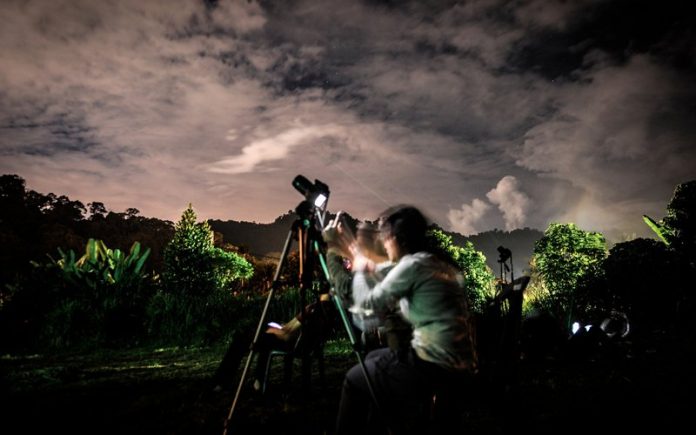
BALIK PULAU: Skywatchers and stargazers in Penang had a year-end treat of witnessing the “Great Conjunction” of Jupiter and Saturn, an astronomical event that was last visible on Earth on March 4, 1226.
According to the National Aeronautics and Space Administration (NASA), the Great Conjunction refers to the close alignment between the two planets, with the closest at 0.1 degrees apart and appear so close that a finger at arm’s length can cover both planets, when they are actually millions of miles apart.
Given that the skies are clear, the two planets can be easily seen with an unaided eye towards the southwest right after sunset.
Bernama joined 20 members of the Astronomical Society of Penang (ASP) and 15 staff from the Penang Mufti Department at the Sheikh Tahir Astronomical Centre, Pantai Acheh, Balik Pulau here, yesterday to witness the event.
The first glimpse of the Great Conjunction from the astronomical centre was sighted at 7.43pm Malaysian time.
“Star-struck” skywatchers who witnessed the Great Conjunction made no hesitation to commemorate the significant moment by taking photographs and selfies with the two planets.
“I will forever cherish this moment even after I am buried under the grave,” one witness exclaimed after having his photo taken with the two planets.
ASP president Chong Hon Yew said the event could be watched even more clearly if the weather was better as the thick clouds made it difficult to watch the Great Conjunction consistently.
He said the closest alignment where Jupiter and Saturn “clashed” with each other was around 9.13pm Malaysian time, but the two planets would be below the horizon by then.
“Nevertheless, it is something definitely worth witnessing and a story worth telling your future generations because you will not be able to see it again until the year 2080,” he added.
He said the Great Conjunction was also observed from the Balik Pulau Container Art site and Heng Ee High School Observatory in George Town.
Meanwhile, Indera Kayangan assemblywoman Gan Ay Ling, who was also present to observe the Great Conjunction at the Sheikh Tahir Astronomical Centre, hoped to promote Perlis as an astro-tourism state.
She said a number of locations in Perlis could serve as potential hotspots for stargazing events due to its low light pollution and clear flat area, such as Chuping and Wang Kelian.
“Promoting astronomy in Perlis would also give opportunities to students to not only expose them with hands-on experiences but also spark their interest in pursuing astronomy,” she said.
She said that the first astronomy event held in Perlis was in February this year at SK Chuping, where teachers and students from Perlis schools were encouraged to participate in a stargazing event with the ASP members.
“While Perlis is still in its exposure phase for astronomy, I do hope that the Perlis government could look more into it and see its potential benefits for the state,” she added.


